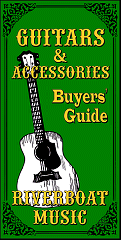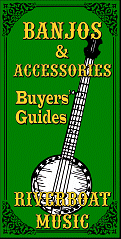

|

Momma Don't 'LowTM is a newsletter to support home-made and roots-based music in general, as well as the readers of our music articles on various web pages, including SchoolOfTheRockTM, Creek Don't RiseTM, and Classic Train SongsTM.
- If you did not get this Momma Don't 'LowTM newsletter through your own e-mail, and you would like to get the newsletters in the future, please Click Here to sign up.
- On the other hand, if you don't want to receive our e-mail updates, please e-mail me with a "Please Unsubscribe" message (worded any way you wish), and we will graciously remove you from our list.
In this Issue - July, 2015
I never promised this would be a monthly newsletter. But it has been a very busy spring for us, and I've been focusing on adding new materials on the sites, setting up new (old) banjos for myself and friends, and answering reader questions about a lot of topics, especially saxophones. Sax players, don't lose heart; we have plans for sharing those answers eventually. But in the meantime, reader questions have kept me focusing largely on banjo. As in, since the last newsletter, we've published fourteen tutorials for new 5-string banjo players, guided largely by questions I've gotten about the things.
Also, I had outgrown my six-string banjos, so I took a risk on an eBay purchase that - if it worked out, should upgrade me to one of the best six-string banjos ever made.
In the meantime, we've started a few new articles that I didn't have time to get in before I send this, but should be available by this fall, if not sooner.
Enjoy any concerts, festivals, jams, or other musical experiences that you're part of this year! Here's hoping you get to make music you like with people you like soon and often.
This issue's articles are:

Beginning 5-String Folk Banjo Tutorials
Instead of answering the same beginning banjo questions one-on-one, willy-nilly, as they come in, I decided to try to write a basic tutorial where I could direct readers for answers. Also, I have permission from some very helpful banjo-playing friends to share material they have created, but I felt that publishing those materials would just cause more questions unless I did something that would "cover the basics" for new banjo players first.
Of course questions keep coming in. So what started as a free six-lesson tutorial for total beginners, has now expanded to 14 lessons, all free. I don't expect anyone to get through it in 14 weeks, though. It's more important that you continuously practice and consolidate what you've learned at every stage than to get "in over your head" every seven days.
In addition, the lessons contain tablature and tips for a number of folk songs that get played in jam sessions and contra dances all over the world. So even if you're past the absolute beginner stage, you may find resources worth checking out.
To jump to the first lesson, which includes a list of our example songs and tabs, please click the following link.
Though the right-hand techniques for Six-String Banjo are different from guitar, the left hand should be about the same. But it hasn't been for me, really. Even with practice and constant adjustment of my mid-range 6-string banjos, the left hand was not "getting it." So I started trolling for a better 6-string banjo to see if that would do it. Plus most of the 6-string banjos I've owned and tried so far have guitar-length necks, and I'd like to get back to a banjo-length neck.
So when I came across a Deering D-6 (Deluxe) on eBay, I took a chance - even though it was strung left-handed. How hard could it be to replace the nut and bridge anyway? Turns out it was more complicated than I thought. But I've gotten by without it so far, and the rewards were definitely worth the risk..
Click on the following link to see the New/Old Deering Deluxe 6 article:
A friend who transferred to Utah in 2010 has been promoting acoustic and traditional music styles there ever since. She has recently begun a web page to serve both local and global audiences.
To check out this nacent resource, click the following link:
While I was writing the early 5-String Folk Banjo tutorials, I found myself explaining the Circle of Fifths. This is a way of describing the relationships among chords. If you're ever jammed with someone who always seemed to know what the next chord was going to be before you did, even without music, he or she was probably familiar with this.
Some folks don't "get it" right away when you try to explain it, though. So while I was working on the tutorial, I not only updated the article, but I also added chord charts  for most folk-based acoustic instruments. for most folk-based acoustic instruments.
Then I developed a handy-dandy little tool that lets you "dial up" the chords you're likely to need in each major key. It's a free download you can print out, cut out, and assemble with a brad (the way you did in elementary school crafts). If that's too difficult for you, I don't know where to go from here. :-)
To check out this new resource, click the following link:
Banjo-maker
Deering has had a boatload of resources available online for years. But often the most useful or up-to-date resources have been buried under multiple links. Deering is trying something new - they call it an "online publication," "Hooks and Nuts. Lots of good stuff there, including several top-notch videos on various techniques.
To check out their new "blog" site, click the following link:
Creek Don't Rise Discussion Forum Reminder
If you've visited our discussion forum, you've probably noticed that Paul's name is on most of what gets posted. But we really have a lot of contributors. When we get a reader question that we think will be of interest to multiple readers, we respond to the inquirer. Then we take any identifying information off the message and our response and post both the question and our answer in the forum.
We also post links to free articles, tabs, and other resources that our friends publish.
So if you want to keep in touch with what we're up to - and what our readers and friends are up to - consider signing up. Even if you never post, it's to your advantage, because when you log in, the little icons light up to show you which posts are new since the last time you logged in.
Of course we would like it even better if you would get involved in reader-to-reader conversations. Every week we learn something from our readers we didn't know before. So feel free to offer your own suggestions, etc.
To visit the forums, click the following link:
To sign up for the forums, click the following link:
|


|
More to Come
If you've spent any time on any of our music sites, you know that we have a lot of topics to share about.
Again, if you did not get this Momma Don't 'LowTM newsletter through your own e-mail, and you would like to get the newsletters in the future, please Click Here to sign up.
In the meantime, if you want to see March's newsletter (the one before this), please click the following link:
Keep playing, keep singing, and keep sharing!
Paul D. Race
http://CreekDontRise.com
http://SchoolOfTheRock.com
http://classictrainsongs.com
|






















 My New/Old Deering Deluxe 6
My New/Old Deering Deluxe 6 New Utah-Based Folk Music Site: SpeckledBirdMusic.com
New Utah-Based Folk Music Site: SpeckledBirdMusic.com Free Downloadable Circle of Fifths Chord Charts and Wheel
Free Downloadable Circle of Fifths Chord Charts and Wheel
 New Deering Online Resources
New Deering Online Resources
